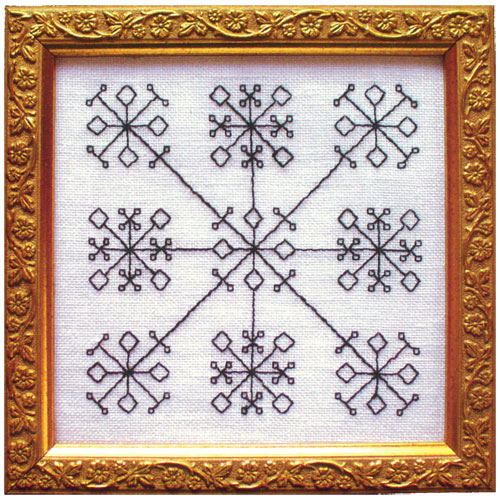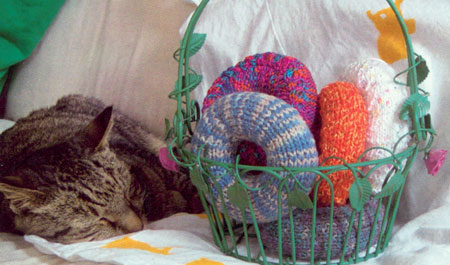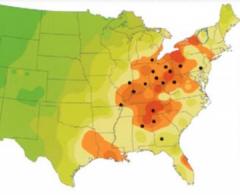
This Article From Issue
May-June 2008
Volume 96, Number 3
Page 259
DOI: 10.1511/2008.71.259
Math fans have long been pegged as geeks, whereas crafters—knitters, crocheters and the like—have been afforded that distinction only very recently. Making Mathematics with Needlework, a new book edited by sarah-marie belcastro and Carolyn Yackel (A K Peters, 2008, $30) brings together these two realms, and the result is both challenging and fun.

From Making Mathematics with Needlework.
The authors are all mathematicians interested in needlework, and their passion for both fields shows clearly in their lucid explications. The introduction offers a thorough survey of math-craft literature, and each chapter includes an overview, a section on the mathematics involved, ideas for teaching the principles to students and detailed instructions on how to make the needlework project in question.
The juxtaposition throughout the book of terms and ideas from the worlds of needlework and mathematics allows problems to be seen from various sides, helping mental knots unravel. Still, unwary crafters may find themselves suddenly lost in a forest of Diophantine equations, and mathematicians may be stymied by mysterious stitch notations. But the book contains so much good material that it's easy to find an accessible project or proof to work with until you're ready to tackle the difficult bits again.
Graphs illuminate the process of stitching blackwork embroidery (done in dark thread on light-colored fabric). The sampler above, an embroidered Holbeinian graph, can be made from a pattern in the book. Quilted Möbius bands are also explored, along with braid theory's relation to the technique of cabled knitting. Even hyperbolic pants make an appearance.
For mathematicians who want to give needlework a try for the first time, the chapter on Sierpinski variations in crochet might be a good place to start. The project—a triangular shawl—uses a manageable number of stitches, and the process of creating it elegantly expresses the mathematics.
The chapter on symmetry in cross-stitch may also be useful for needlework newbies; the main skill required is patience. The mathematics section reveals some of the constraints present in cross-stitch, but it is more focused on expressing mathematical concepts than on offering tools for generating new patterns. The straightforward text and pleasing graphics provide a great refresher on symmetry patterns. And the demonstration of wallpaper symmetry groups , along with the project sampler, offers a new take on the arrangements of fancy stitches that characterize traditional samplers—which often display reflection symmetry themselves.

From Making Mathematics with Needlework.
I found the chapter on knitting tori particularly exciting. It begins with the basic component of the craft: the knit stitch. The author performs a combinatorial analysis of the variables that affect the form and orientation of such stitches. The section led me to understand the mechanics of knit stitches with greater clarity, and I imagine other crafters will experience similar revelations as they read this section. The tori themselves, cuddly little donuts ( right) , will inspire readers to take out their knitting needles.
Making Mathematics with Needlework offers mathematicians new avenues of exploration and the chance to learn new tactile skills. For crafters, the book will strengthen memory for and understanding of mathematical concepts and will likely improve the ability to apply that knowledge to other problems that confront the adventurous needleworker. Yackel and belcastro have created an excellent synthesis, one that offers enough ideas to keep geeks (of both the crafty and mathematical varieties) busy with needles and yarn, pencil and paper, for years to come.

American Scientist Comments and Discussion
To discuss our articles or comment on them, please share them and tag American Scientist on social media platforms. Here are links to our profiles on Twitter, Facebook, and LinkedIn.
If we re-share your post, we will moderate comments/discussion following our comments policy.